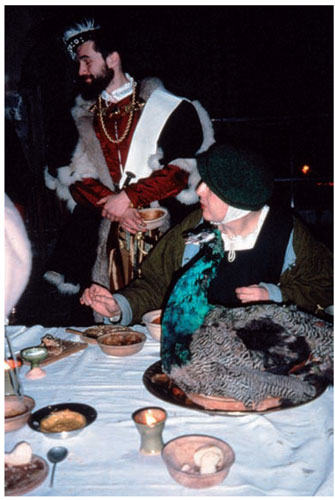All the King's Cooks (33 page)
Read All the King's Cooks Online
Authors: Peter Brears
The Cooks
Henry VIII’s Master Cooks were given a clothing allowance to ensure that all their staff were clean and well-dressed at all times. Here is a group of the cooks who have been operating the palace’s Tudor kitchens every Christmas and New Year since 1991.

Greencloth Yard
Standing here beneath the Back Gate, the Porter could watch the various doorways leading into the kitchen offices, as could the Clerk of the Kitchen from his office over the inner gateway. Greencloth Yard in the foreground housed the coal cellar, the chandlery and the spicery, while the pastry, confectionary and dry fish store were in Pastry Yard beyond.
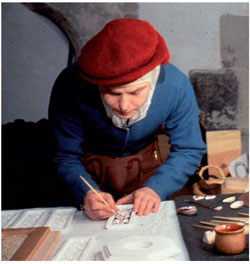
Baking
Having been heated within by burning faggots of brushwood, the ashes were raked out of the bakehouse ovens, the loaves inserted, and a sheet-iron door sealed in place with mud. Once the bread had been baked, the door was removed, and the loaves taken out using a long-handled oven-peel.
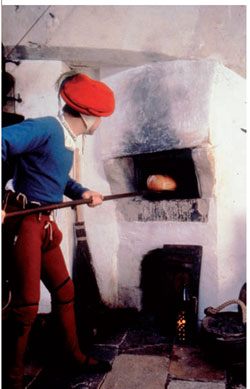
Confectionery
The confectioners made a great variety of sugarwork for the King and leading courtiers. The most useful of all their mixtures was sugar plate decorated with vegetable colouring and gold leaf.
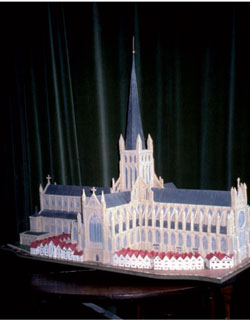
St Paul’s Cathedral
Confectioners at Hampton Court were making sugar-sculptures of the great medieval St Paul’s Cathedral in 1527, their successors later making them as New Year presents for Queen Elizabeth.
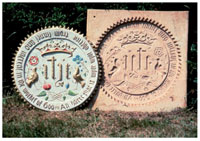
Moulded Marchpane
A drawing of an early sixteenth-century marchpane mould enabled it to be re-carved and used to make a white gingerbread marchpane, its IHC name of Jesus being decorated with natural colours and gilding.
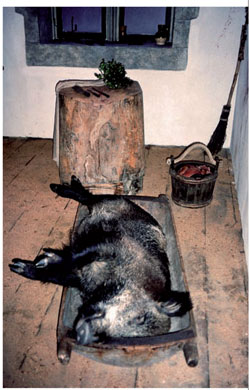
A Wild Boar
This was prized both as the fiercest of all native game, and as the source of the finely-flavoured brawns and boar’s heads served at Christmastime.
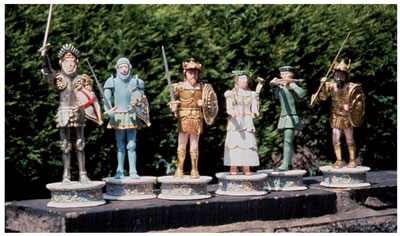
Sugar Figures
These figures combine written evidence from descriptions of a Hampton Court banquet, and visual evidence from diverse contemporary sources to re-create an impression of their original appearance.
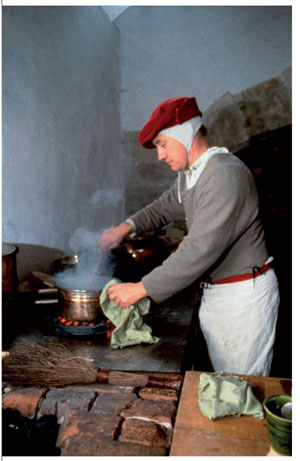
The Hall-Place Kitchen
Built for Henry VIII around 1530, this kitchen rose forty feet to the ridge of the roof, this great height being required to dissipate the heat and steam from the fires and cooking pots.
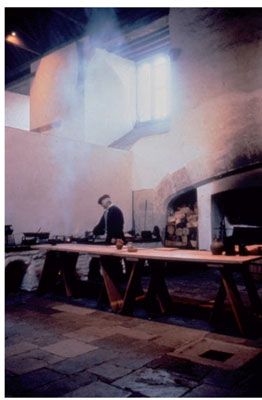
Charcoal Stoves
For all the finer aspects of cookery, the cooks used charcoal stoves — strong masonry benches with circular firebaskets set into their tops. Having a good draught from below, they gave a clear, steady heat with no smoke — only a perfectly invisible blast of scorching carbon monoxide which stifled anyone who accidentally inhaled it.
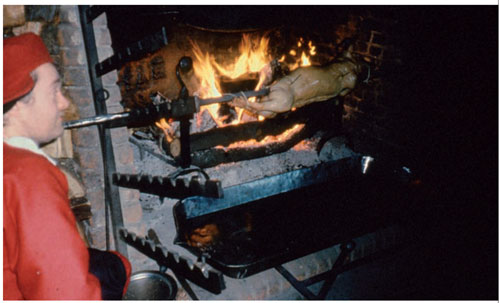
Roast Sucking Pig
As the pig is turned on its spit, the thin meat over the ribs is already hot, and so it will now be shielded from the heat by an iron pig-plate which leaves the shoulders and hams exposed so that they can cook through evenly.
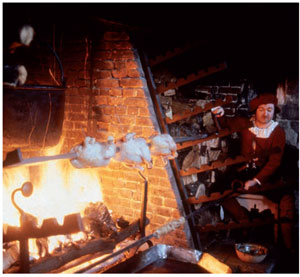
Farced Chicken
Using methods introduced from the Middle East during the Crusades, the chickens have been stuffed between their skins and flesh with a rich fat pork, herb and egg forcemeat. This bastes them and retains all their own juices and flavour as they roast.
